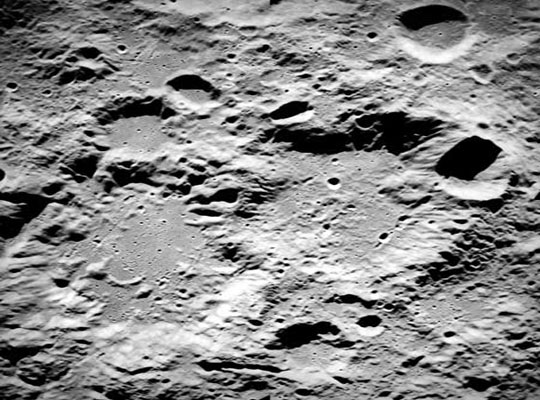US scientists claim the land on the moon contains silver, sodium and some other chemical compounds.

The pits in an area on the moon. (Photo: NASA).
On October 9 , 2009 , NASA spacecraft launched a 2,200 kg mass rocket into the hole Cabeus (100 km in diameter) near the south pole. Then another spacecraft brought the probe down to the position of the explosion to see if ice crystals were fired.

Illustrations of explosions on the moon.
The data that the probe sent back noticed in the dust rising from the explosion there were many ice crystals and steam. According to the analysis, the amount of water on the moon accounts for 5 to 64 parts per billion of the planet's mass, which is at least 100 times larger than all previous predictions. However, most of the water is in the rock floor.
AFP said Brown scientists in the United States analyzed dust particles from last year's bombardment and found quite a lot of chemical compounds such as water, carbon monoxide (CO), carbon dioxide (CO 2). ), ammonia (NH 3 ). They also found two precious elements, silver (Ag) and sodium (Na).
' Pit Cabeus is like a treasure that contains many elements and compounds that are distributed throughout the moon. They are in the eternal darkness of the moon , "said geologist Peter Schultz , who led the study.
Schultz said that decades ago Apollo discovered the existence of not only silver but also gold in the moon's earth. But finding silver at the Cabeus hole showed that silver atoms moved to two poles. However, because the ratio of silver in the soil on the moon is relatively low, people cannot exploit it on a large scale.
Most scientists believe the moon formed when an object is about the same size as Mars struck the Earth 4.5 billion years ago. The amount of matter spilled from the collision condensed and formed the moon. Magma (molten rock) occurs during the formation of the moon's door and water molecules are trapped when the magma cools and turns into crystals.
 Van Allen's belt and evidence that the Apollo 11 mission to the Moon was myth
Van Allen's belt and evidence that the Apollo 11 mission to the Moon was myth The levels of civilization in the universe (Kardashev scale)
The levels of civilization in the universe (Kardashev scale) Today Mars, the sun and the Earth are aligned
Today Mars, the sun and the Earth are aligned The Amazon owner announced a secret plan to build a space base for thousands of people
The Amazon owner announced a secret plan to build a space base for thousands of people